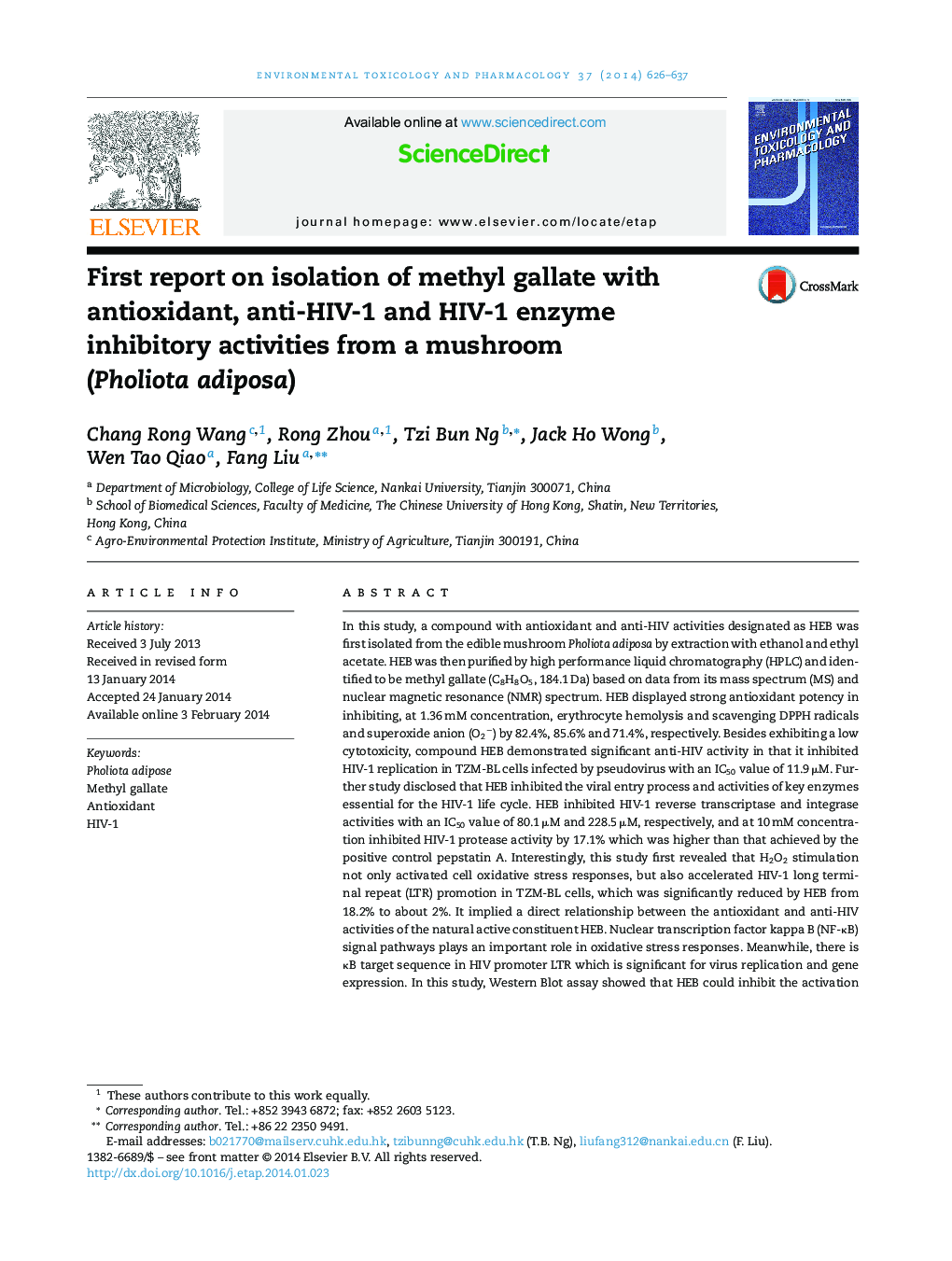| Article ID | Journal | Published Year | Pages | File Type |
|---|---|---|---|---|
| 2583003 | Environmental Toxicology and Pharmacology | 2014 | 12 Pages |
•This is the first report on the isolation of methyl gallate Pholiota adiposa.•It inhibits erythrocyte hemolysis, scavenges DPPH radicals and superoxide anion.•It inhibited the activity of HIV reverse transcriptase, protease and integrase.•It suggested that it has a potential for AIDS treatment.
In this study, a compound with antioxidant and anti-HIV activities designated as HEB was first isolated from the edible mushroom Pholiota adiposa by extraction with ethanol and ethyl acetate. HEB was then purified by high performance liquid chromatography (HPLC) and identified to be methyl gallate (C8H8O5, 184.1 Da) based on data from its mass spectrum (MS) and nuclear magnetic resonance (NMR) spectrum. HEB displayed strong antioxidant potency in inhibiting, at 1.36 mM concentration, erythrocyte hemolysis and scavenging DPPH radicals and superoxide anion (O2−) by 82.4%, 85.6% and 71.4%, respectively. Besides exhibiting a low cytotoxicity, compound HEB demonstrated significant anti-HIV activity in that it inhibited HIV-1 replication in TZM-BL cells infected by pseudovirus with an IC50 value of 11.9 μM. Further study disclosed that HEB inhibited the viral entry process and activities of key enzymes essential for the HIV-1 life cycle. HEB inhibited HIV-1 reverse transcriptase and integrase activities with an IC50 value of 80.1 μM and 228.5 μM, respectively, and at 10 mM concentration inhibited HIV-1 protease activity by 17.1% which was higher than that achieved by the positive control pepstatin A. Interestingly, this study first revealed that H2O2 stimulation not only activated cell oxidative stress responses, but also accelerated HIV-1 long terminal repeat (LTR) promotion in TZM-BL cells, which was significantly reduced by HEB from 18.2% to about 2%. It implied a direct relationship between the antioxidant and anti-HIV activities of the natural active constituent HEB. Nuclear transcription factor kappa B (NF-κB) signal pathways plays an important role in oxidative stress responses. Meanwhile, there is κB target sequence in HIV promoter LTR which is significant for virus replication and gene expression. In this study, Western Blot assay showed that HEB could inhibit the activation of NF-κB signal pathway stimulated by H2O2 in mouse spleen cells through suppressing NF-κB (p65) translocation into nucleus and NF-kappa-B inhibitor (IκB) degradation in cytoplasm. In summary, the antioxidant HEB from P. adiposa could inhibit HIV-1 replication through multiple target sites. The data suggest that natural antioxidant compounds might have a potential for treatment of AIDS.
Graphical abstractFigure optionsDownload full-size imageDownload as PowerPoint slide
